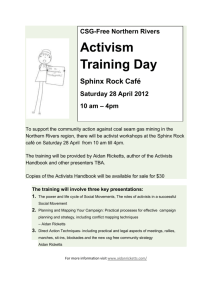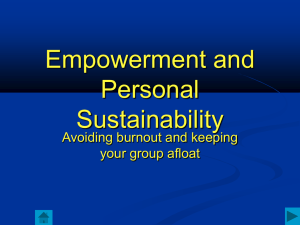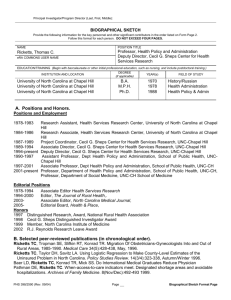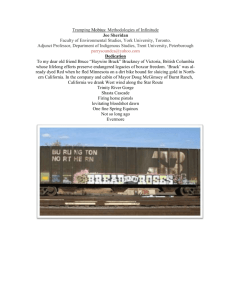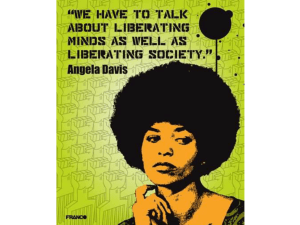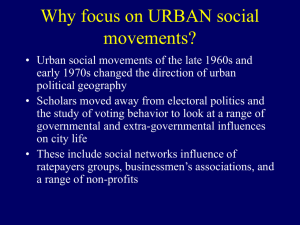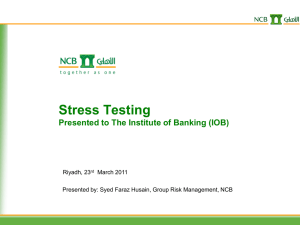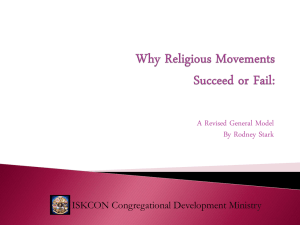Organising for social change
advertisement
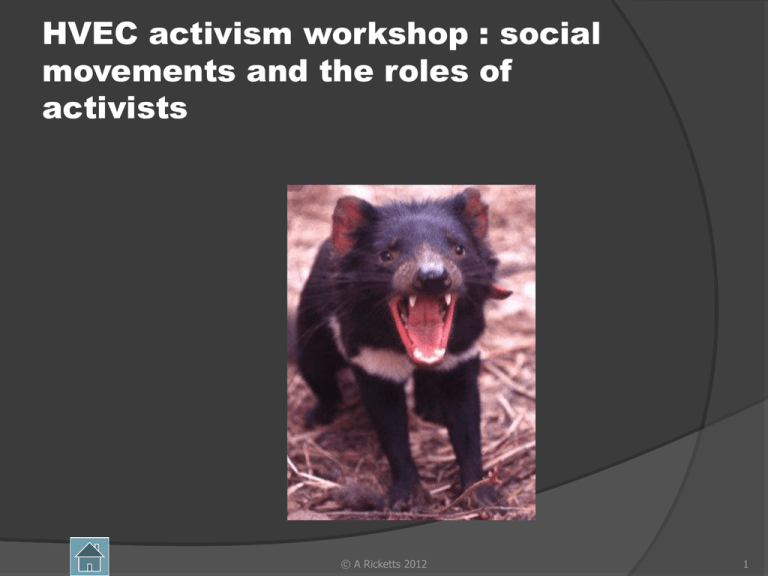
HVEC activism workshop : social movements and the roles of activists © A Ricketts 2012 1 New book available !! 'The Activists' Handbook' is a powerful guide to grassroots activism. A priceless resource for everyone ready to make a difference, environmental activist Aidan Ricketts offers a step-by-step handbook for citizens eager to start or get involved in grass-roots movements and beyond. Providing all essential practical tools, methods and strategies needed for a successful campaign and extensively discussing legal and ethical issues, this book empowers its readers to effectively promote their cause. Lots of ready-to-use documents and comprehensive information on digital activism and group strategy make this book an essential companion for any campaign. Including case studies from the US, UK, Canada and Australia, this is the ultimate guidebook to participatory democracy. To purchase copies online go to http://aidanricketts.com Action groups, social movements, environment centres? The term can refer to the individual organisations that make up a movement but mostly it refers to the wider organic movement toward a particular ideal © A Ricketts 2012 3 The life and life cycle of social movements Social movements are like other living things, the movement and the people in and around it go through cycles of change these include: eight stages of a successful social movement the four roles of activism, (Moyer 2001) © A Ricketts 2012 4 Some terminology Social Movements are collective actions in which the populace is alerted, educated and mobilised… sometimes over years and decades to challenge the powerholders Powerholders are the elite group of people in whose hands decision making power has been concentrated, they are usually governments and corporations © A Ricketts 2012 5 The life cycle of a social movement Author Bill Moyer presents a theoretical map of the eight stages of a successful social movement It is right to be skeptical of theoretical models but I applied this model to an historic analysis of the NSW Old growth campaign and it is uncanny how closely NEFA’s lifecycle corresponded to Moyer’s description © A Ricketts 2012 6 The eight stages of social movements 1. Normal times 8 Continuing the struggle 2. Prove the failure of official institutions Moyer’s MAP model of social movements (adapted) 7. Success 6. Majority public opinion © A Ricketts 2012 3. Ripening conditions 4. Takeoff 5. Perceptions of failure 7 Stage 1: Normal Times Conditions exist that violate widely held values in the community (ancient forests being destroyed) However, the majority is unaware of the nature or frequency of such events The majority feels comfortable with official explanations (Moyer 2001 p43) © A Ricketts 2012 8 Stage 2: Prove the failure of existing institutions Activists must demonstrate that a problem exists (logging continues despite ‘moratorium’) Conduct research to gather more evidence Utilise available opportunities (political, legal, media) to highlight and publicise the issue (Moyer 2001, p p48) © A Ricketts 2012 9 Stage 3: Ripening conditions This may be a slow moving process Growing numbers of people are discontent with the status quo People stop relying on established organisations to effect change (TWS) New small autonomous local action groups begin to form (anyone you know?) (Moyer 2001, p 51) © A Ricketts 2012 10 Stage 4: Take off New social movements burst into the public spotlight Usually propelled by a shocking or graphic trigger event (Franklin dam was an example of this for the Hydro issue) Followed by a non-violent action campaign (marches rallies, blockades) (Moyer 2001, p 54) © A Ricketts 2012 11 Stage 5: Perceptions of failure Hopes of an early victory are frustrated as the powerholders dig in and resist change Many activists despair, burn out or become internally divisive Ironically the movement is usually progressing to stage 6, but activists are too close to the action to see it (Moyer 2001, p 59) © A Ricketts 2012 12 Stage 6: Majority public opinion The beginning of a long term grassroots struggle with the powerholders The movement wins the backing of a larger proportion of the public The movement moves utilises all available means to educate and the public, tactics often change (Moyer 2001, p64) © A Ricketts 2012 13 Subcycles within the cycle At times movements need to temporarily return to other stages Not all aspects of a campaign are at the same point at the same time Usually even after a major victory there remains new campaigns to be fought afresh © A Ricketts 2012 14 Subcycles and Tassie forests The subcycles aspect is very import for SWST type campaigns, because there have been prior cycles of partial success (SW wilderness, RFA) and the work of modern movements is to expose the fact that ‘moratoriums have not stopped old growth logging. © A Ricketts 2006 15 Stage 7: success The movement reaches a new plateau (another subcycle of success perhaps) Public opinion turns the tide against the powerholders Powerholders scramble to realign themsleves (e.g. whaling) Significant goals are achieved (usually not all goals) (Moyer 2001, p75) © A Ricketts 2012 16 Stage 8: continuing the struggle The success attained in stage 7 is not the end of the struggle The particular campaign was only a part of the wider struggle for a sustainable participatory democracy The movement and the individuals have an opportunity to refocus and renew New groups may focus on unfinished business (Moyer 2001, p 80) © A Ricketts 2012 17 Where is the Tassie forest campaign up to? It is clearly beyond stages 1-3 generally but there is unfinished business There have been very significant gains made in the past, there is broad public awareness and broad public support yet there is frustration that old growth logging continues This suggests that it is currently stalled in perceptions of failure and struggling to convert public support into success © A Ricketts 2012 18 The eight stages of social movements 1. Normal times 8 Continuing the struggle 2. Prove the failure of official institutions You are Here (probabaly) 7. Success 6. Majority public opinion © A Ricketts 2012 3. Ripening conditions 4. Takeoff 5. Perceptions of failure 19 Why does this life cycle matter? It is important to know when you are in ‘perception of failure’ because it’s a challenging stage and can affect how people behave (to your detriment) Because its closer to success than most people think Having a bigger picture helps your campaign planning © A Ricketts 2012 20 Now lets risk yet another theoretical model I am probabaly just as cautious of ‘theory’ as anyone, but these models are based on experience and they do have things to teach us There are a number of familiar personality types that we find in campaign groups, they all have a role but they don’t always like each other © A Ricketts 2012 21 The four activist roles Reformer Citizen All four roles must be played effectively in a successful social movement (Moyer 2001) Rebel Change agent © A Ricketts 2012 22 The importance of understanding the roles Often there is conflict between the different roles, for instance the front line rebel and the reformer Sometimes within whole movements different groups perform different roles (eg TWS and SWST) Each role has a different significance depending on where the movement is up to in its life cycle © A 12cketts 2012 23 Citizens Citizens locate their actions squarely in society’s mainstream. Sometimes these people may not realise that they have just crossed the line from passive citizenship to activism “I’m only an average person but I want this situation to change” © A Ricketts 2012 24 The Rebel rebel These are the people that build the conflict… they help focus society’s attention on the problem Rebel individuals or organisations have a wide range of tools for their work including: mass demonstrations, sit ins, blockades, stunts © A Ricketts 2006 25 Negative rebels The rebel is a very useful role, especially early in a movements life cycle or at trigger points (Iraq war) Some individuals identify too strongly with this role and may not see when they should move to another role or worse… Turn their rebellion against other roleplayers in the movement © A Ricketts 2012 26 Change agent Change agents can be difficult to detect. Change agents are involved in community education around issues Change agents are the people and organisations that aim to change the entrenched attitudes of society © A Ricketts 2012 27 The reformer The reformer is a role often played by professional organisations (TWS?) Reformers are often least in touch with the grass roots and may risk being seduced by the powerholders (TWS) Reformers are nonetheless very useful once movements reach a tertiary stage in their life cycle (the deal making stage)(except they like to take the credit for all that hard work of the frontline activists) © A Ricketts 2012 28 Do you have to be one of these roles? Remember these are roles not personalities as such (but can be) Any one person or organisation may play combinations of these roles at the same or different times Some people are more oriented toward one role, others are more flexible Ideally each person and organisation understands its own role and respects the role of others © A Ricketts 2012 29 The roles and the cycle It was mentioned previously that the four roles have different significance at different stages of a movements life cycle. The citizen role is most involved in stages 1 and 2 The rebel role is most involved in stages 3 and 4 and to some extent stage 5 The change agent role comes to the fore in stages 5 and 6 The reformer is predominant in stages 7and 8 © A Ricketts 2012 30 Making use of Moyer’s model It is easy to be skeptical about theoretical models and for good reason Of course the map is not the territory You can use it to gain perspective, avoid despair and to diagnose problems in your campaign © A Ricketts 2012 31 Conflict mapping Having examined the idea that social movements and activists display some common aspects, we can move on to the idea of forward planning of campaigns Conflict mapping is a powerful technique for gathering information and perspective and focussing these in the most strategic ways 32 Whats coming next… In the next sessions we will have a go at doing some conflict mapping for the campaigns you are working on. We will attempt: Allies and foes maps Powerholders maps Campaign strategy maps © A Ricketts 2012 33
